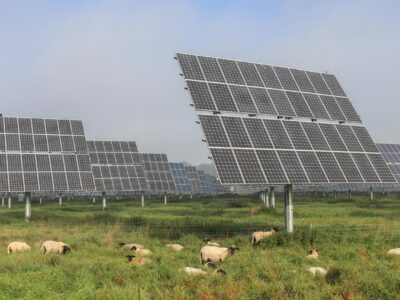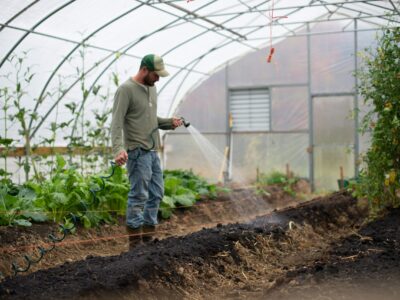Agriculture is going through a period of revitalization. Regenerative practices like no-till farming and cover crops are making inroads where traditional farming practices dominated. With livestock, farms are turning away from large barns and coops where animals are confined to tightly packed spaces and toward free-range practices. Pasturebird Poultry has gone further and developed a chicken coop with all the benefits of a traditional one while maintaining free-range freedom.
Pasturebird’s chicken coop is solar-powered, automated, and developed in partnership with scientists from NASA with an investment from Perdue Farms. The Automated Range Coop (ARC) is 7,500 square feet and floorless, equipped with motorized wheels that roll itself a short distance every 24 hours. The coop mimics the natural pace of chickens, moving about 50 feet over seven minutes so that the nearly 6,000 chickens living inside can have a new place to graze daily. It is also equipped with small rubber flaps along the sides that give chickens the freedom to roam outside the coop in good weather.
The flaps also provide a simple way to perform “dead checks,” an often tedious job that requires spotting dead chickens in a sea of thousands of live ones. The coop rolls over any deceased chickens and nudges the live ones into their new location. The idea is a simple yet ingenious way of improving a system that has been fraught with issues.
In traditional coops, chickens would be forced to cohabitate in tight quarters amongst thousands of other birds in the same small area where they ate, pooped, and often died. The close quarters resulted in unhealthy chickens and poor products. The alternative was raising chickens free-range, a considerably more sanitary option that still resulted in disease and being endangered by predators.
The ARC gives chickens the freedom and healthy food source of a free-range field while providing the protection and shelter of a coop. “Animals were never intended to stay stationary and live where they poo,” said Paul Grieve, Pasturebird’s CEO and co-founder. “We’re looking at nature as the real designer, and we’re trying to replicate this within agricultural systems.”
In addition to ensuring healthier living conditions for the livestock, it drastically improves the farms. Because the coop is floorless, the chickens graze evenly, allowing their waste to fertilize the farm naturally.
“People forget that plants feed animals, and animals feed plants, and we’ve broken the cycle so horribly, and we’ve gone back to a crazy man-made system where you’re hearing about insane fertilizer shortages,” Grieve says. “We have 9 billion chickens a year that are producing some of the best fertilizer in the world; the problem is it’s stuck inside their houses and not incorporated back on the crop field.”
The chickens raised with the ARC provide large-scale access to better quality chickens that are both healthier and more sustainable. Dan Barber, chef and co-owner of Blue Hill at Stone Barn, and one of the culinary world’s premier authorities in the sustainable farming-to-table movement, described the importance of the emergence of Pasturebird’s technology. “There are so few examples of technology actually improving agriculture — from farmers to landscapes to flavor — that when I come across one, it’s worth celebrating.”




